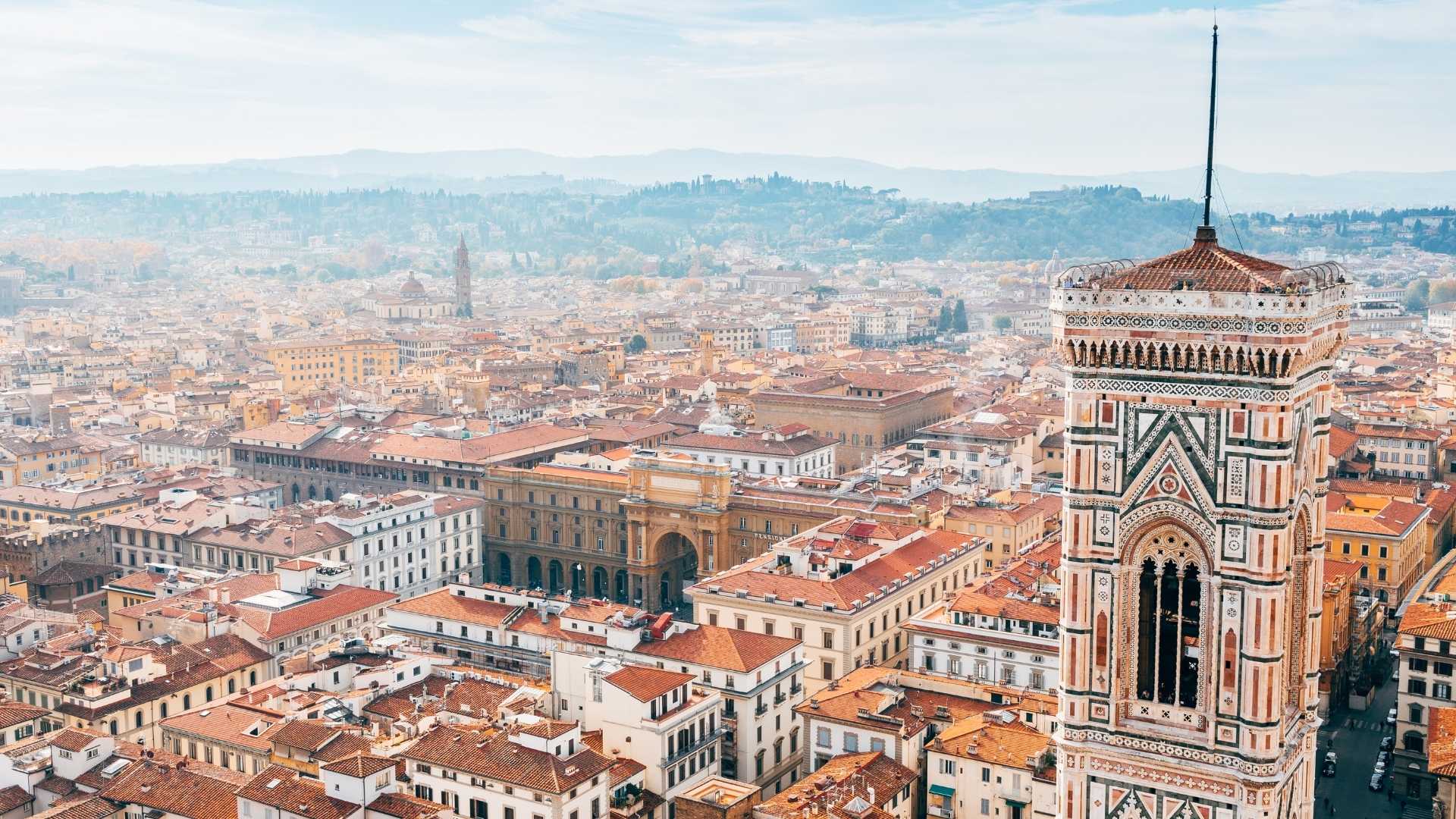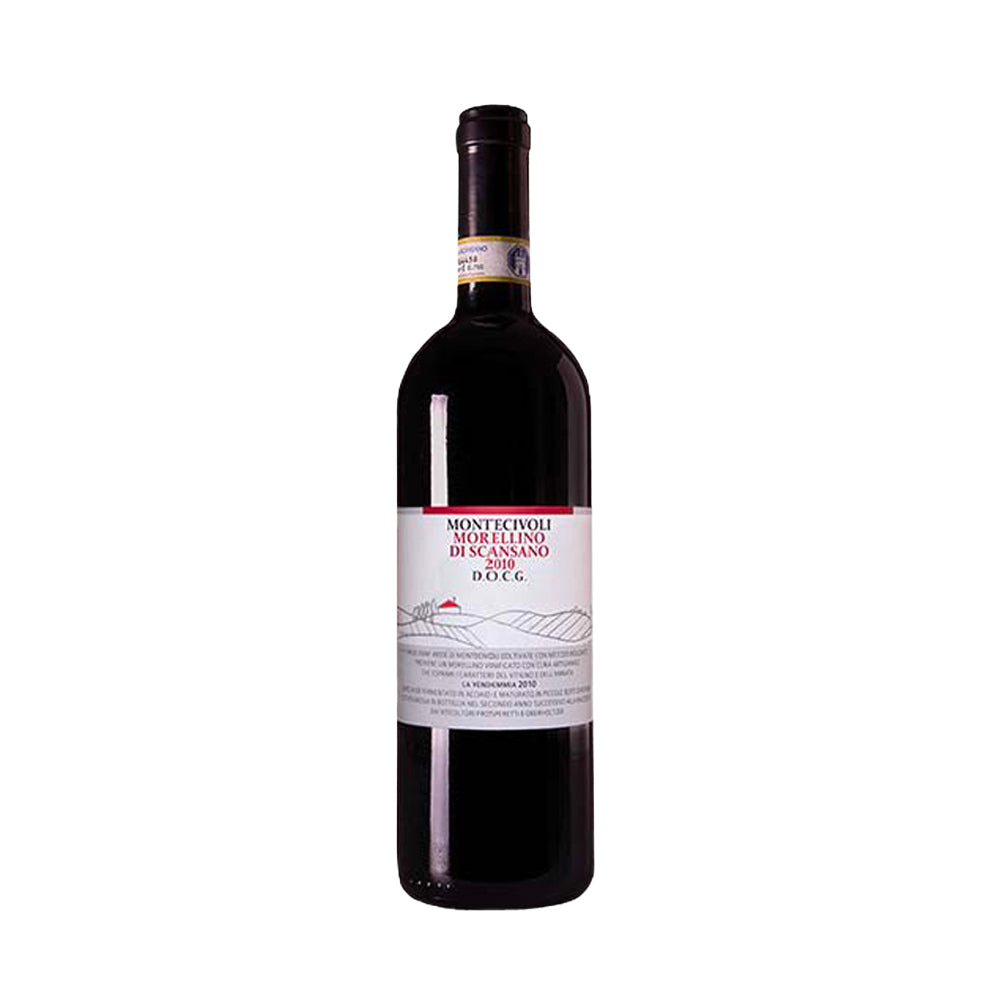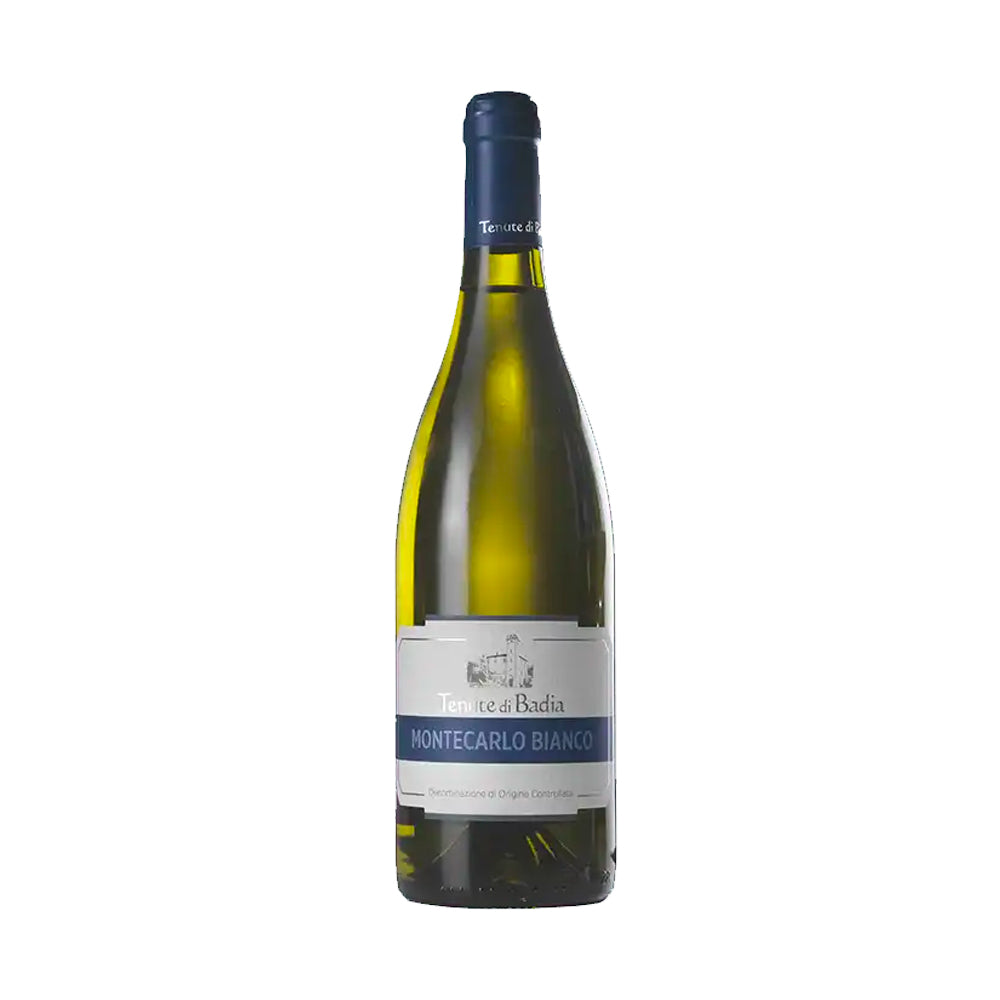FINE TUSCAN WINES
5 Unique Reds and 5 Whites Recommended by Sommeliers
What are the best Tuscan wines to buy?
Between enchanting landscapes and ancient villages, Tuscany produces truly excellent wines.
But why are Tuscan wines famous all over the world? Below is what you need to know about one of the most prized Italian wine excellences and advice for buying the best bottles.
What are we talking about:
- Production areas of the finest wines
- The most common vines
- Native vines
- International vines
- Influence of climate on the finest wines
- 5 fine and exclusive Tuscan red wines
- 5 fine and exclusive Tuscan white wines
- Chianti and Chianti Classico
Tuscan wines are among the most prized in Italy, for various reasons:

Tuscany is a region with a long winemaking tradition , since the time of the ancient Romans.

Tuscany is characterized by a great variety of soils and microclimates , which allow the cultivation of different varieties of grapes and the production of high quality wines, different in each individual area.

On average, Tuscan winemakers pay great attention to the quality and care of their wines. Finally, the fame of Tuscan wines is also linked to the fact that the region has been able to develop some of the most prestigious and internationally recognized brands , such as Chianti Classico , Brunello di Montalcino , Vino Nobile di Montepulciano and Supertuscans .

The great Tuscan wines have been able to conquer the most demanding palates thanks to their extraordinary quality and their ability to express the typical nature of the territory.
Let's see which are the best Tuscan wines to buy, based on everyone's needs.
Tuscany is a region with a long winemaking tradition , since the time of the ancient Romans.
Tuscany is characterized by a great variety of soils and microclimates , which allow the cultivation of different varieties of grapes and the production of high quality wines, different in each individual area.
On average, Tuscan winemakers pay great attention to the quality and care of their wines. Finally, the fame of Tuscan wines is also linked to the fact that the region has been able to develop some of the most prestigious and internationally recognized brands , such as Chianti Classico , Brunello di Montalcino , Vino Nobile di Montepulciano and Supertuscans .
The great Tuscan wines have been able to conquer the most demanding palates thanks to their extraordinary quality and their ability to express the typical nature of the territory.
Let's see which are the best Tuscan wines to buy, based on everyone's needs.




The production areas of the finest wines in Tuscany
- Let's start with a fact: Tuscany has almost 60,000 hectares of vineyards and the quality of its wine production is very high.
- The average yield per hectare is 45 quintals of grapes , compared to the approximately 108 of the average recorded in Italy. 2,185,000 hectoliters of wine were produced in 2021 (most recent data, ISTAT source), while in the previous three years production was approximately 2,500,000 hectoliters.
- Red wine production in Tuscany represents 87% of the total, while white wines occupy approximately 13% .
- The most important winemaking areas of Tuscany, those that produce the region's finest wines, are the following:
The Chianti area
Area located mainly in the province of Florence and produces some of the best-known wines in Tuscany.
Montecucco
Another area in the province of Florence , where a controlled and guaranteed denomination wine is produced, perhaps not so well known but of very high quality, Montecucco Sangiovese DOCG.
Montalcino
This area is located in the province of Siena and produces the famous Brunello di Montalcino , a very fine red wine.
Montepulciano
Another area of the province of Siena , which produces Vino Nobile di Montepulciano , another red wine much appreciated in Italy and abroad.
Sassicaia
On the Tuscan coast, in the province of Livorno , famous for its high quality red wines, including Sassicaia.
Saint Gimignano
In the province of Siena , well known for one of the great Italian white wines, Vernaccia di San Gimignano.
Maremma
The Maremma area is located in the southern part of Tuscany and produces high-quality red wines such as Morellino di Scansano .
Elba island
Famous island in the Tyrrhenian Sea where quality wines such as Elba Aleatico Passito DOCG are produced.
60 000
Hectares of vineyards
45 q
Average yield per Ha
2,185,000 Hl
Produced in 2021
Wineries to keep an eye on
Within these areas there are some wineries that work particularly well, because they are guided by the search for quality in the vineyard and in the cellar.
In the Chianti Classico area we at Sommelier Wine Box have offered our customers the wines of the Dalle Nostre Mani winery and Podere Il Palazzino , in Montalcino the small Tenuta San Guglielmo and Il Conventino , in Montepulciano the very small company of Marco Barbi (Barbicaia ) , in San Gimignano Il Palagione, in Scansano Provveditore or Montecivoli, on the Island of Elba we have for example selected the wines of the Azienda Agricola Mola, and in Montecucco the Podere Le Calle , a typical agricultural company as in the past, with sown fields , olive groves and animals, in addition to the vineyards.
The most common vines
The most widespread grape variety in Tuscany is undoubtedly Sangiovese , a black grape, followed by Trebbiano Toscano (white grape), Merlot , and Cabernet Sauvignon (both black grape).
Typical native vines
The king of Tuscan grapes is Sangiovese , with which the famous Chianti is produced. Other grapes typical of Tuscany are for the black berry: canaiolo, abrusco, aleatico, alicante, barsaglina, canina nera, ciliegiolo, colorino, lanaiolo, mammolo, malvasia nera, pollera nera, plume gentle, fistitello, vermentino nero and the almost unknown leaf round (of which no nursery produces any more plants but recently removed from oblivion and from the risk of extinction thanks to grafts especially at the behest of Donatella CInelli Colombini).
Native Tuscan white grapes are: Trebbiano Toscano, Albarola, Ansonica, Biancone, Canaiolo Bianco, Durello Gentile, Grechetto, Greco, Malvasia Bianca, Moscato Bianco, Vernaccia di San Gimignano.
International vines
Various vines originating from other regions are widespread in Tuscany and have adapted perfectly to the local climate and produce grapes of the highest quality. For the red grapes: cabernet sauvignon, cabernet franc, merlot, syrah, pinot noir, petit verdot while for the white grapes we mainly talk about chardonnay.
Influence of climate on the finest wines of Tuscany
The climate of Tuscany plays an important role in the production of wine, as it determines the ripening of the grapes and therefore the taste and aroma of the wine. In general, the climate of Tuscany has a positive impact on wine production, since the ideal climatic conditions allow uniform ripening of the grapes and consequently the production of high-quality wines.
The climate of Tuscany is basically Mediterranean, therefore mild on the coastal areas, with hot and dry summers; and continental towards the interior with more marked temperature variations.
This climate is ideal for growing varieties such as Sangiovese, which is the most widespread grape in the region, as it thrives in hot, dry climates.
However, the climate varies between different areas of Tuscany and influences the production of fine wine differently. In coastal areas, such as the Bolgheri area, the climate is cooler and humid, with clear marine influences, which also favors the production of wines from white grapes such as Vermentino and Viognier.
Which Tuscan wines to buy? DOCG, DOC and IGT recommended by our sommeliers
Tuscany has 11 DOCG, 41 DOC and 6 IGT: choosing the best and perfect bottles for everyone's taste is not at all easy.
The most prized wines of all are Brunello di Montalcino DOCG, the well-known Chianti DOCG and the very famous Chianti Classico DOCG, as well as Morellino di Scansano DOCG and Vino Nobile di Montepulciano DOCG.
As a white, undoubtedly Vernaccia di San Gimignano DOCG and as a passito wine Elba Aleatico Passito DOCG.
But also among the denominations of origin there are fine wines of absolute value such as Bolgheri DOC, Sassicaia DOC, Ornellaia DOC. In Tuscany, then, there are many lesser-known gems, even outside the most famous denominations, of great value and to be discovered.
11
DOCG
41
DOC
6
IGT
What is the difference between Chianti and Chianti Classico?
CHIANTI CLASSICO is produced within the historic Chianti region while CHIANTI wine is produced outside the older region .
The Chianti denomination, and therefore also its oldest area of origin, the Chianti Classico , obtained the DOCG (controlled and guaranteed designation of origin) in 1984 : this is the highest recognition for quality Italian wines. Since 1996 , Chianti Classico has been an autonomous DOCG, no longer a sub-area of Chianti.
In concrete terms : the production area of Chianti Classico DOCG is made up of 14 municipalities in the provinces of Florence and Siena . The production area of Chianti DOCG is made up of the provinces of Florence, Siena, Arezzo, Pisa, Pistoia and Prato in generally hilly areas (located 200-400 meters above sea level on average).
The specifications : Chianti Classico DOCG must have at least 80% Sangiovese , and other red grapes cannot therefore exceed 20%. Chianti DOCG must have a minimum of 70% Sangiovese , the other grapes a maximum of 30% (of which white grapes no more than 10%); the cabernet franc and cabernet sauvignon vines cannot, individually or together, exceed the maximum limit of 15%.
The typologies : if the Chianti Classico comes out with the Annata, Riserva, Gran Selezione typologies, the Chianti DOCG comes out in the Rosso, Riserva, Superiore typologies.
A clue : to distinguish a Chianti Classico wine from a Chianti is to look if there is the Black Rooster on the neck of the bottle or on the label: since 2005 it has in fact been the trademark of Chianti Classico.


5 fine and exclusive Tuscan red wines
Accedi a vini italiani di nicchiaIn addition to the great denominations seen above, the Supertuscans such as Bolgheri DOC and Sassicaia DOC are also worth mentioning: Tuscan red wines produced outside the rules of the DOCG specification, a blend of vines of French origin according to the Bordeaux style such as cabernet sauvignon, cabernet franc and merlot, instead of or in addition to the traditional sangiovese.
Supertuscans are also characterized by the use of barrique refinement.
5 fine and exclusive Tuscan white wines
Compose your box of Tuscan wines with the advice of our Sommeliers
Do you also want to discover the best bottles of Tuscany?
Get advice from those who discover the excellence of the area every day and have our sommeliers design a personalized selection based on what you want to taste, your tastes and how much you want to spend .
Be amazed by 100% personalized selections of Tuscan wines, and remember: you can agree on the selection and have it changed if it doesn't convince you or if you already know the cellars.
FAQ on Tuscan Fine Wines
How to understand which Tuscan wine to buy?
Finding your way among Tuscan wines is not easy also due to the complexity of the regional quality system; It is also fundamental to learn to know your own tastes when it comes to Tuscan wines, that is, what you like most and what you like least.
1. For those approaching the world of wine, the advice is to first try the great classics , that is, the wines that have made the history of the region, starting with bottles with a controlled and guaranteed designation of origin, including Brunello di Montalcino, Chianti, Chianti Classico, Vernaccia di San Gimignano etc. They tend to be wines that come from the heart of the region.
2. Later you can start exploring the wines of more coastal Tuscany , and therefore Morellino di Scansano, Montecucco Sangiovese, Suvereto...
Where to buy fine Tuscan wines?
There are many ways to buy fine wines from Tuscany: in a wine shop , using online e-commerce to save time, going directly to the cellar , getting advice from great sommeliers on personalized selections using the Sommelier Wine Box service.
What are the best wines of Tuscany?
Tuscany is very rich in wines, of many types.
1. Among the most prized are: Brunello di Montalcino DOCG, Carmignano DOCG, Chianti DOCG, Chianti Classico DOCG, Elba Aleatico Passito DOCG, Montecucco Sangiovese DOCG, Morellino di Scansano DOCG, Suvereto DOCG, Val di Cornia Rosso DOCG, Vernaccia di San Gimignano DOCG, Vino Nobile di Montepulciano DOCG.
2. And then: Ansonica Costa Argentario DOC, Barco Reale di Carmignano DOC, Bolgheri DOC, Bolgheri Sassicaia DOC, Colli di Luni DOC, Colline Lucchesi DOC, Cortona DOC, Elba DOC, Grance Senesi DOC, Maremma Toscana DOC, Montecarlo DOC, Montecucco DOC, Moscadello di Montalcino DOC, Orcia DOC, Rosso di Montalcino DOC, Rosso di Montepulciano DOC, San Gimignano DOC, Vin Santo del Chianti DOC, Vin Santo del Chianti Classico DOC, Vin Santo di Carmignano DOC.
3. A separate mention should be dedicated to the Super Tuscans such as Bolgheri DOC and Sassicaia DOC: wines produced outside the rules of the DOCG specification, a blend of vines of French origin with or without the traditional Sangiovese.
What are the typical vines of Tuscany?
The most important Tuscan grape is undoubtedly Sangiovese , followed by Canaiolo, Ciliegiolo, Colorino, Lanaiolo, Mammolo, Prugnolo Gentile and Vermentino Nero, for the black grape. The most important native Tuscan white grapes are Vernaccia di San Gimignano , Trebbiano Toscano, Ansonica, Canaiolo Bianco, Grechetto, Greco and Trebbiano Toscano.
How many wineries are there in Tuscany?
There are approximately 12,400 Tuscan wineries. Many of these are very small wineries: the vineyard area they cultivate, on average, does not reach 4 hectares each .
What are the finest wines of Tuscany?
The finest wines from Tuscany, which are also suitable for long-term storage in the home cellar, are: Brunello di Montalcino DOCG, Chianti DOCG, Chianti Classico DOCG, Morellino di Scansano DOCG, Vino Nobile di Montepulciano DOCG for the reds; Vernaccia di San Gimignano DOCG for the white, while there is also an excellence for the passito wine, the Elba Aleatico Passito DOCG.
Which DOC and DOCG wines are there in Tuscany?
In Tuscany there are 11 controlled and guaranteed designations of origin (DOCG) and 41 controlled designations of origin (DOC).
1. In particular, these are the 11 controlled and guaranteed designations of origin of the region: Brunello di Montalcino DOCG, Carmignano DOCG, Chianti DOCG, Chianti Classico DOCG, Elba Aleatico Passito DOCG, Montecucco Sangiovese DOCG, Morellino di Scansano DOCG, Suvereto DOCG, Val of Cornia Rosso DOCG, Vernaccia di San Gimignano DOCG, Vino Nobile di Montepulciano DOCG.
2. While these are the controlled designations of origin of Tuscany: Ansonica Costa Argentario DOC, Barco Reale di Carmignano DOC, Bianco dell'Empolese DOC, Bianco di Pitigliano DOC, Bolgheri DOC, Bolgheri Sassicaia DOC, Candia dei Colli Apuani DOC, Capalbio DOC , Colli dell'Etruria Centrale DOC, Colli di Luni DOC, Colline Lucchesi DOC, Cortona DOC, Elba DOC, Grance Senesi DOC, Maremma Toscana DOC, Montecarlo DOC, Montecucco DOC, Monteregio di Massa Marittima DOC, Montescudaio DOC, Moscadello di Montalcino DOC , Orcia DOC, Parrina DOC, Pomino DOC, Rosso di Montalcino DOC, Rosso di Montepulciano DOC, San Gimignano DOC, Sant'Antimo DOC, San Torpè DOC, Sovana DOC, Terratico di Bibbona DOC, Terre di Casole DOC, Terre di Pisa DOC , Val d'Arbia DOC, Val d'Arno di Sopra DOC (with subareas Pratomagno and Pietraviva), Val di Cornia DOC, Valdichiana Toscana DOC, Valdinievole DOC, Vin Santo del Chianti DOC (with subareas Colli Aretini, Colli Fiorentini, Colli Senesi , Pisan hills, Montalbano, Montespertioli, Rufina), Vin Santo del Chianti Classico DOC, Vin Santo di Carmignano DOC.












